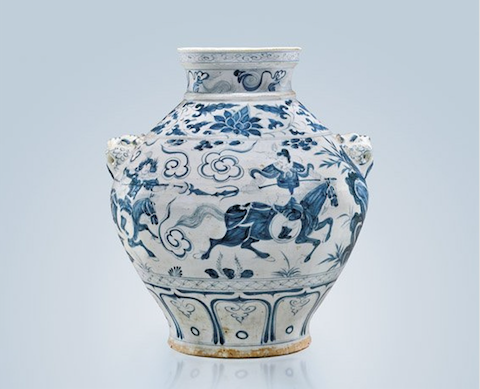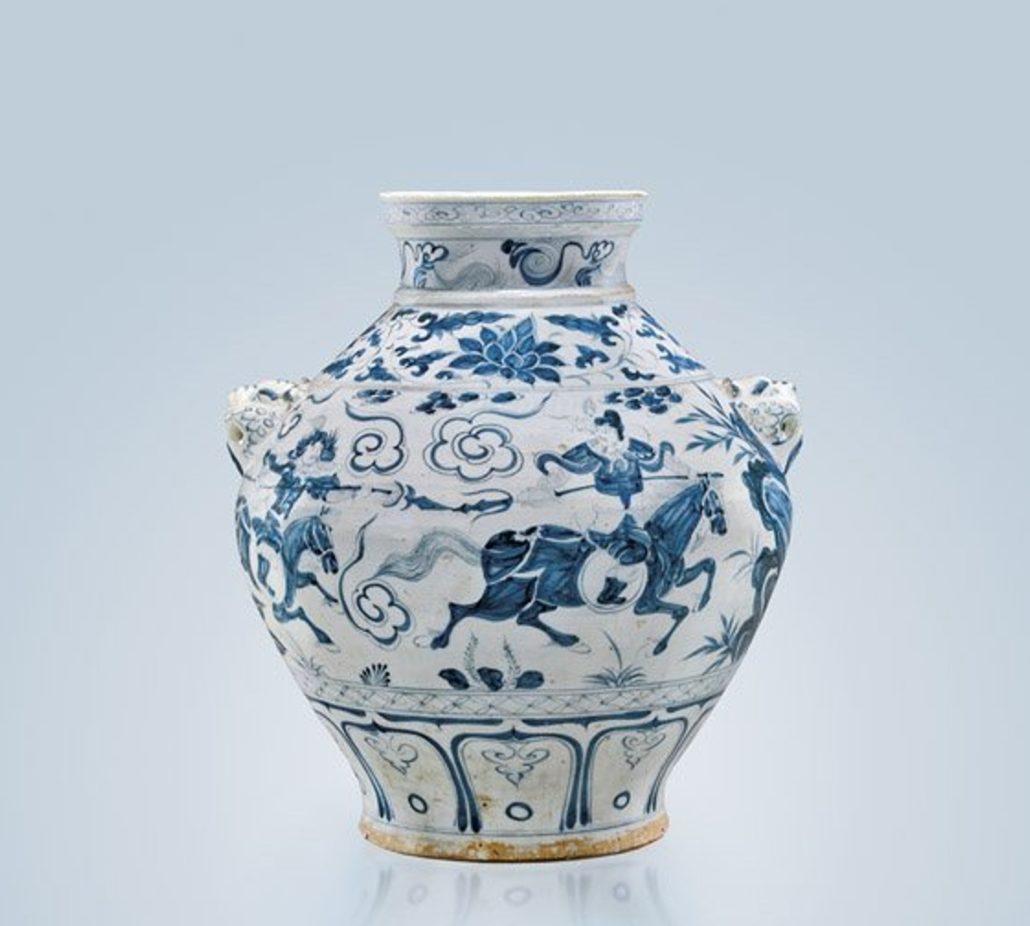
NEW YORK — China’s art tradition, from pottery and calligraphy to painting, is ancient in origin, dating back to the Stone Age. Examining China’s revered dynasties, it becomes clear that each left its own distinctive mark on a history that continues to unfold as contemporary artists add their influences. Let’s take a look at the earliest period of Chinese art creation and subsequent dynasties with which collectors should become familiar.
Neolithic period (10,000-2,000 BCE)
In the Neolithic period which preceded all of the dynasties, the functional art of pottery-making was dominant. The earliest examples were first seen in Jianxi. Jade carving was also prevalent in this era, said Isadore “Izzy” Chait, founder of I.M. Chait Gallery/Auctioneers in Beverly Hills, California. “[Jades] can be the most valuable objects from that time period,” he said.
Archaic period (3000-2100 BCE)
Notable objects from the Archaic period include ritual bronzes and jades. In ancient times, the Chinese valued jade above other precious materials, even gold. Collectible jade items of period include ritual objects such as bi discs and cong tubes, small carved items like netsuke, and weapons. “They also had ceramics and pottery, but the most valuable are the ritual bronzes and also the jades. Some have brought millions of dollars each at major auctions around the world,” Chait said.
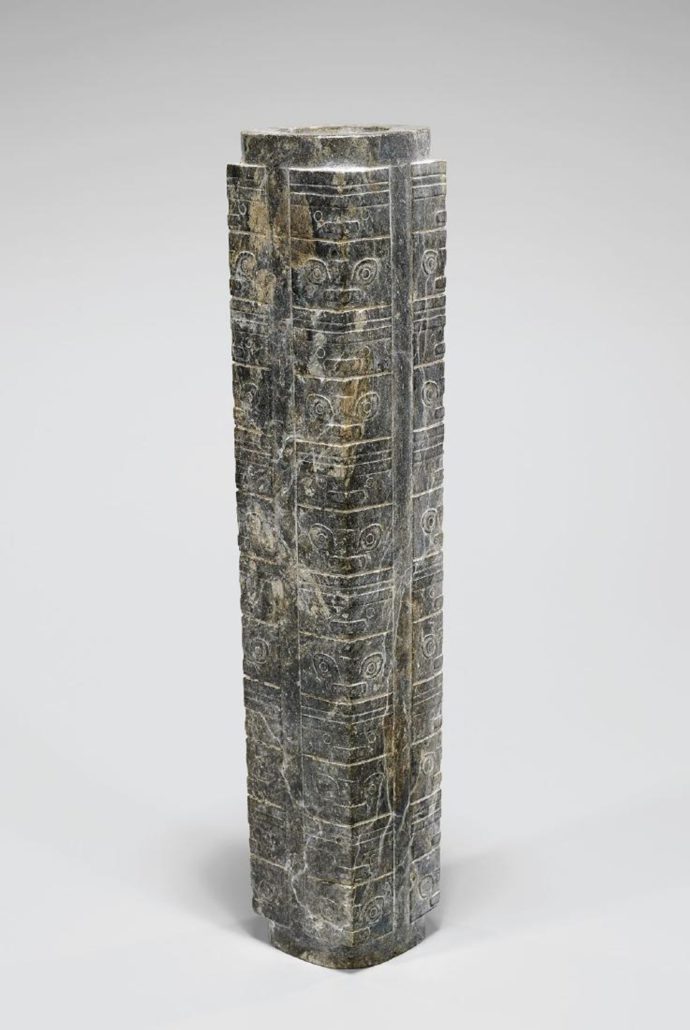
Xia Dynasty (circa 2100-1600 BCE)
Following the ancient era comprising the Neolithic and Archaic periods, there was the Xia Dynasty, which is widely recognized as China’s first imperial dynasty. Lasting nearly five centuries and ruled by 17 emperors, this dynasty marked a milestone leap after the late Neolithic art. The period continues to be known for its production of bronze and gold objects, pottery, jade carvings, sculpture and lacquerware.
Shang Dynasty (circa 1600-1050 BCE) and Zhou Dynasty (circa 1046-256 BCE)
During China’s Bronze Age, there were a number of areas where bronze was produced, “but the area along the Yellow River in present-day Henan Province emerged as the center of the most advanced and literate cultures of the time,” according to the Metropolitan Museum of Art. Early bronzes were likely made using a piece-mold technique, instead of lost-wax technique, and while this was a laborious process, it allowed the artist working the bronze to create sharp detail in the most intricate designs.
A trademark Shang motif is an animal-like mask with bulging eyes, often in deep relief, which was most commonly seen on Shang bronze vessels. Shang and Zhou items are very expensive and highly collectible, particularly the jades and bronzes, Chait said.
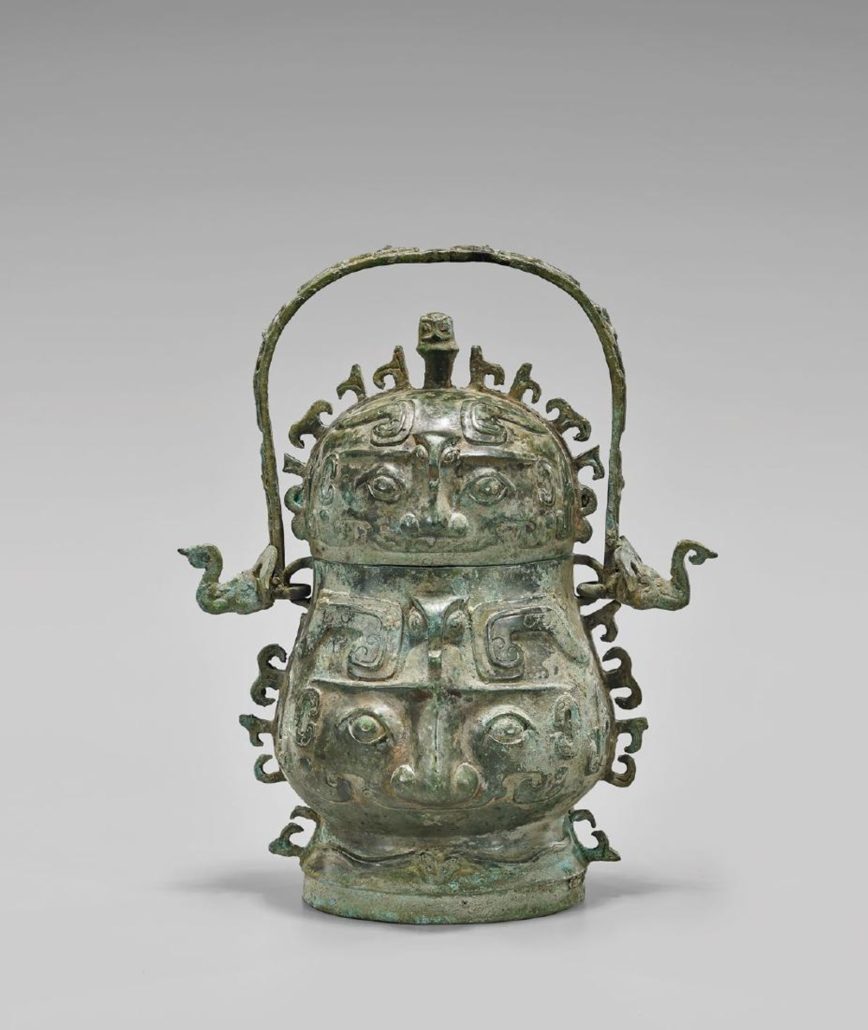
Qin Dynasty (221-206 BCE)
The Qin Dynasty, while brief, was notable for the stunning achievement of the Terracotta Warriors. In an effort to cheat death or guard him the afterlife, Emperor Qin Shihuang created a massive underground tomb with a terracotta army of figures.
Qin, Han, Sui and Tang Dynasty art collectors mostly collect pottery sculptures and also stone, mostly sandstone sculptures, Chait said.
Han Dynasty (206-220 BCE)
It’s interesting that during the Han Dynasty artists were also developing and experimenting with the beginnings of porcelain, called proto-porcelain, Chait said. Han pottery often had a green glaze deriving from lead, and also a brown glaze. In a departure from the art of previous dynasties, Han Dynasty works are less associated with rituals and ceremonies and tended to explore themes rooted in mythology and daily life.
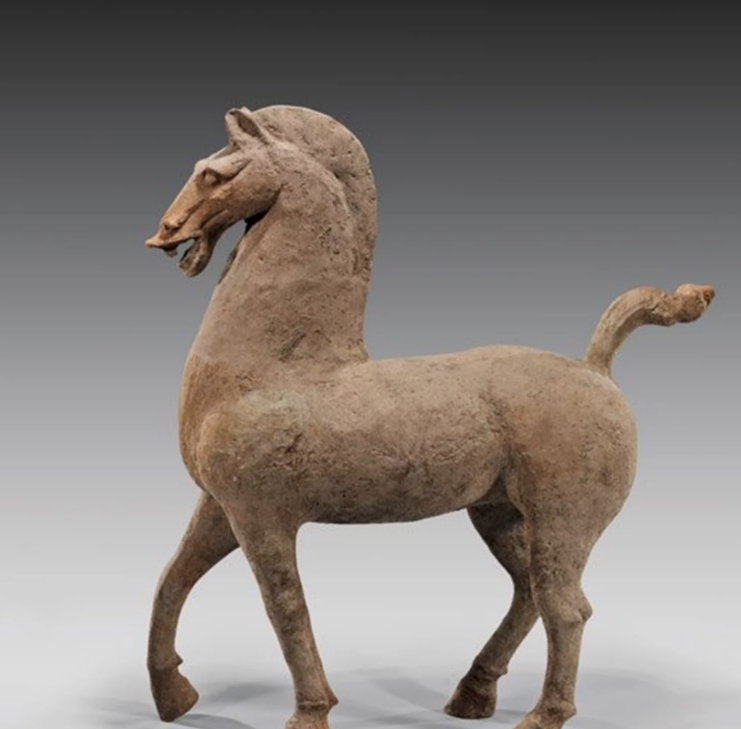
Six Dynasties (220-589 CE)
Several dynasties were famous for sculptures of pottery, marble and stone, including the Six Dynasties, Chait said. Despite the many wars waged during this period, there were important cultural advances. One of them, woodblock printing, enabled many to learn the teachings of Buddha.
Sui Dynasty (581-618 CE) and Tang Dynasty (618-906 CE)
Following the Six Dynasties were the Sui and Tang Dynasties, both distinguished for their sculptural pottery. “These dynasties were most famous for their animals and figures, both in unglazed and painted forms,” Chait said. “They also invented a straw-color glaze and a three-color glaze called ‘sancai glaze’…sometimes with added blue.” With increased trading along the Silk Road, Chinese art began to show influences of other cultures and regions, including the Middle East, Mongolia and India. Tang tomb figures were well known and are very collectible.
Song Dynasty (960-1279 CE) and Liao Dynasty (907-1125 CE)
The Liao and Song Dynasties share an overlap of years. Liao was similar to Tang in the colors used in its glazing but produced different forms — mostly vessels, Chait said. “During the Song Dynasty we get very important glazes and wares such as Yingqing, Celadon, Shufu, Jun, Ding and the most rare and most valuable, Ru ware.” Most objects created during Song Dynasty’s reign are vessels of various forms. Very few figurals were produced.
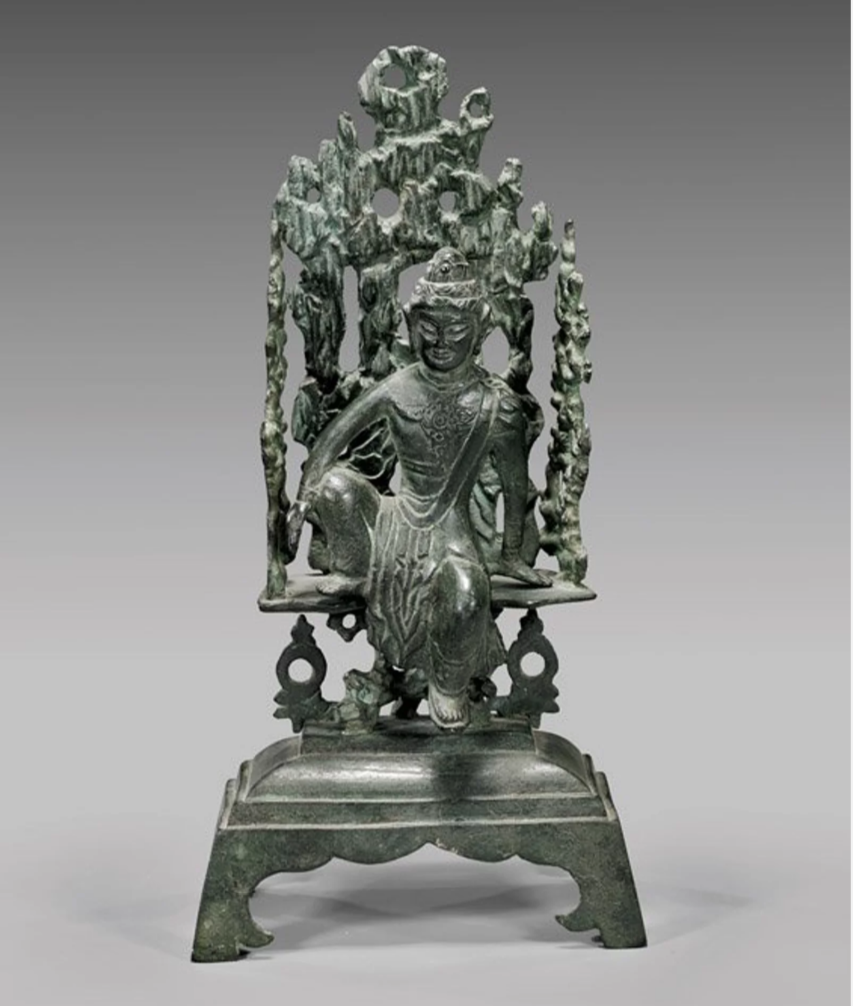
Some of China’s most famous painters were active during this period, as well. “If one goes to the Palace Museum in Taipei, one can see the most important paintings in Chinese history,” Chait said. “About 20 or 30 years ago I was there and was struck with awe by a ‘simple’ scroll painting of a group of deer in a forest. I had to stop and stare at this painting for an hour or more. It was breathtakingly magnificent.”
Song ceramics are highly collectible and rare kilns and sculptures are very expensive. Paintings and lacquerware from this period are also quite expensive, Chait said.
Yuan Dynasty (1279-1368 CE)
The Yuan Dynasty is renowned for its porcelains in underglaze Mohamedan/cobalt blue, and underglaze red (from copper). These have been selling for hundreds of thousands and even millions of dollars for many decades, Chait said. Yuan wares are almost never marked, but porcelain from this period is as expensive as marked Ming items. (See image at top of page.)
Ming Dynasty (1368-1644 CE)
Now comes the Ming Dynasty, arguably the most important period in Chinese art history. This era is distinguished for its porcelains, temple sculptures, jades, scroll paintings and more. The Hongwu period, named for the emperor Hongwu (1328-1398 CE), is especially eminent for its porcelains. “In my 50 years of dealing in Chinese antiques, I have only had a few pieces from this period. You might say it is quite rare,” Chait said.
The first Ming emperor, Yonglo, is regarded by some as China’s most famous emperor. Many treasured Buddhist bronzes from Yonglo’s timeframe bear his reign mark. Yonglo also promoted the manufacture of porcelain, most of which were not marked.
After the Ming Dynasty, there was a brief period called the Transitional Period. “This was during the 17th century, and it produced some quite famous blue-and-white porcelains, as well as some colored wares — the best two being called Daotsai as well as Wu Tsai, referring to the number of colors used,” Chait said. These are very collectible and still not very expensive. Some were marked with appropriate reign marks, but most were unmarked.
A notable Ming-era sale set a new auction record in March 2018 when Sotheby’s Hong Kong sold two sets of Buddhist sutra manuscripts. Considered to be the most important Buddhist manuscripts to sell at auction, the Imperial Wisdom Sutras sold for US$30,428,852. The manuscripts were made by imperial order of the Ming Emperor Xuande in the first half of the 15th century.
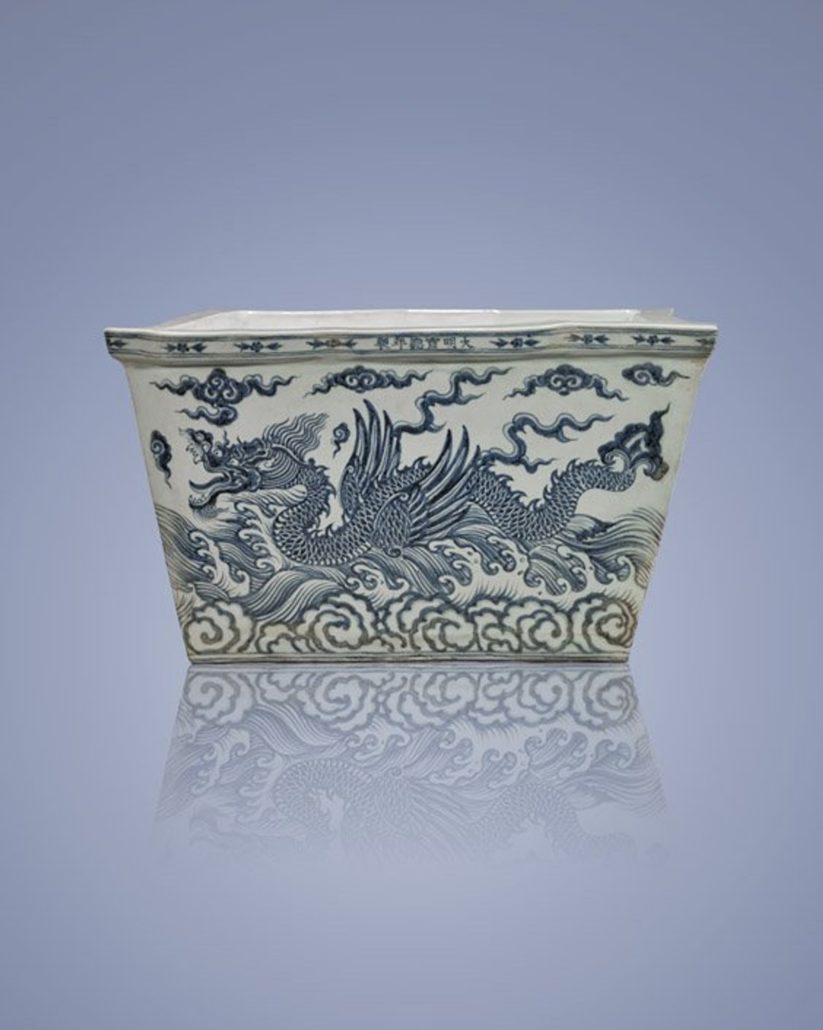
In general, the most expensive Ming 15th-century porcelains are those which are marked and of the period, but they can be surpassed in value by early 15th-century Yonglo-era porcelain, which is rarely marked.
After the Ming Dynasty, the Manchus took over in what is referred to as the Qing Dynasty.
Qing Dynasty (1644-1912 CE)
Qing is another huge field, with items from the 18th century being the most valuable — especially if they are marked and of the period. This era saw decorative arts like porcelains, Buddhist bronzes, jades, paintings and scholars’ objects flourish in vast quantities.
The three most important emperors of the Qing Dynasty are Kangxi, Yongzheng and Qianlong. Kangxi started in the late 17th century and ruled until the early 18th century, Chait said. His ceramics were relatively reasonably priced until just some decades ago. Kangxi enamel wares include Famille Verte (green spectrum), Famille Noire (black based), and Famille Jaune (yellows). These were very expensive in the 1920s and profusely copied. Some of the original wares are now in the Metropolitan Museum of Art in New York City.
The emperor Yongzheng introduced Famille Rose enamel on porcelain. He was also famous for blue-and-whites and various enamel wares originally developed during the Ming Dynasty. “His pieces with reign marks have sold for millions and tens of millions of dollars each,” Chait said. “Frequently he had Ming things copied and put his reign mark on them.” Sometimes Yongzheng porcelains have sold for as much as, or more than, the Ming originals. His reign was also famous for scholar’s objects, cloisonné enamels, carved jades, wood carvings, scroll paintings and more.
In the middle of the 18th century, Emperor Qianlong assumed the throne. “He was famous for everything. Emulating Yongzheng, he was a scholar, poet and most importantly a collector of Archaic bronzes and jades, Song paintings and more,” Chait said. “Sometimes he would take an early jade and inscribe his poem on it. He was also famous for bringing an important Italian artist into his court, Giuseppe Castiglione, who would paint Chinese-style art.” Qianlong is probably the most famous and prolific of all Chinese emperors. His marked pieces also can bring millions and tens of millions of dollars. Fifteenth- and 18th-century-marked Buddhist bronzes can also be quite costly.
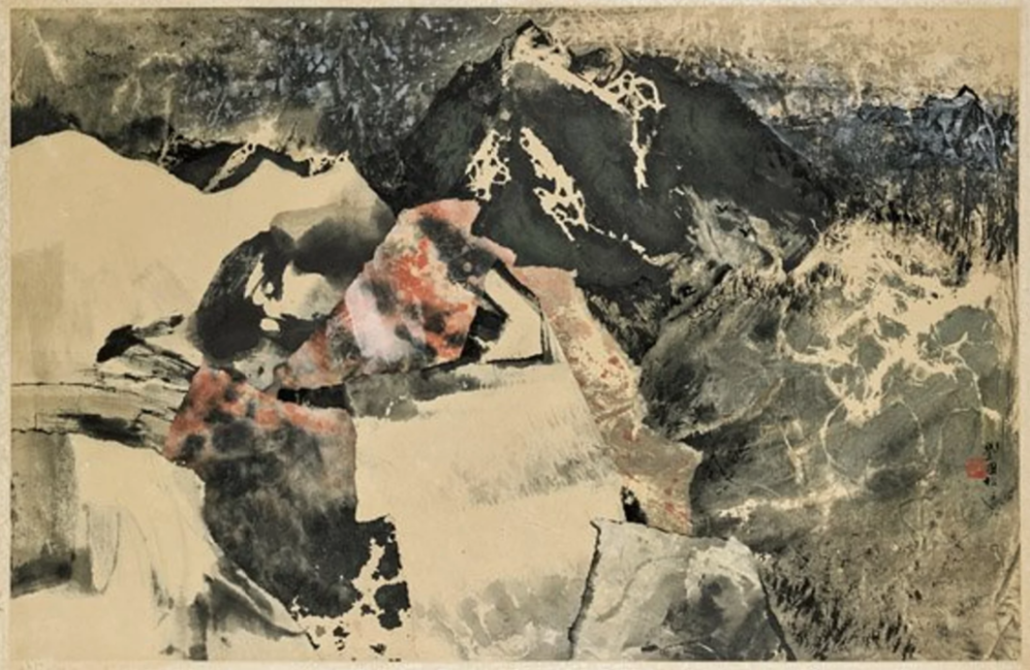
Collecting Chinese art
There are many types of Chinese-art collectors and many different reasons behind their interest in acquiring particular types of pieces, said Jake Chait, one of Izzy’s sons who represents the second generation of the Chait family business. “Some people exclusively collect bronze, however some bronze collectors only have an interest Buddhist-related bronzes as opposed to Archaic ritual bronzes,” he said, citing just one example of how narrowly defined a collector’s motivation might be.
“There are ceramics from all dynasties, but someone who collects Qing porcelain may not necessarily collect Tang pottery,” he continued. “Some collectors only purchase scholar’s objects and works of art that span several of those periods and in each of those periods the pieces could be extremely different. There are also art collectors who will go after one piece just for the love of the piece itself, with no other significance behind it.”
Overall, the most desired pieces are those which are rare, of high quality, and most importantly, beautiful, such as imperial wares, the younger Chait said.
Tips for new collectors
“With the availability of objects now being much greater than ever before, through the Internet or other modern means, a new buyer should visit museums, read books written by reputable authors and only purchase from well-established venues that will not misrepresent objects,” Jake said.
Izzy Chait agreed, adding, “The key for a new collector is to find reputable and well-known dealers, and LOOK LOOK LOOK. The Internet is a good place to look, but beware. There are thousands of fakes out there being offered by unscrupulous vendors, and once you buy something and find it is a fake, it’s very hard to get your money back.”
Click to visit I.M. Chait Gallery/Auctioneers online. View fully illustrated catalogs from the company’s upcoming and past auctions at LiveAuctioneers.com .
# # #


